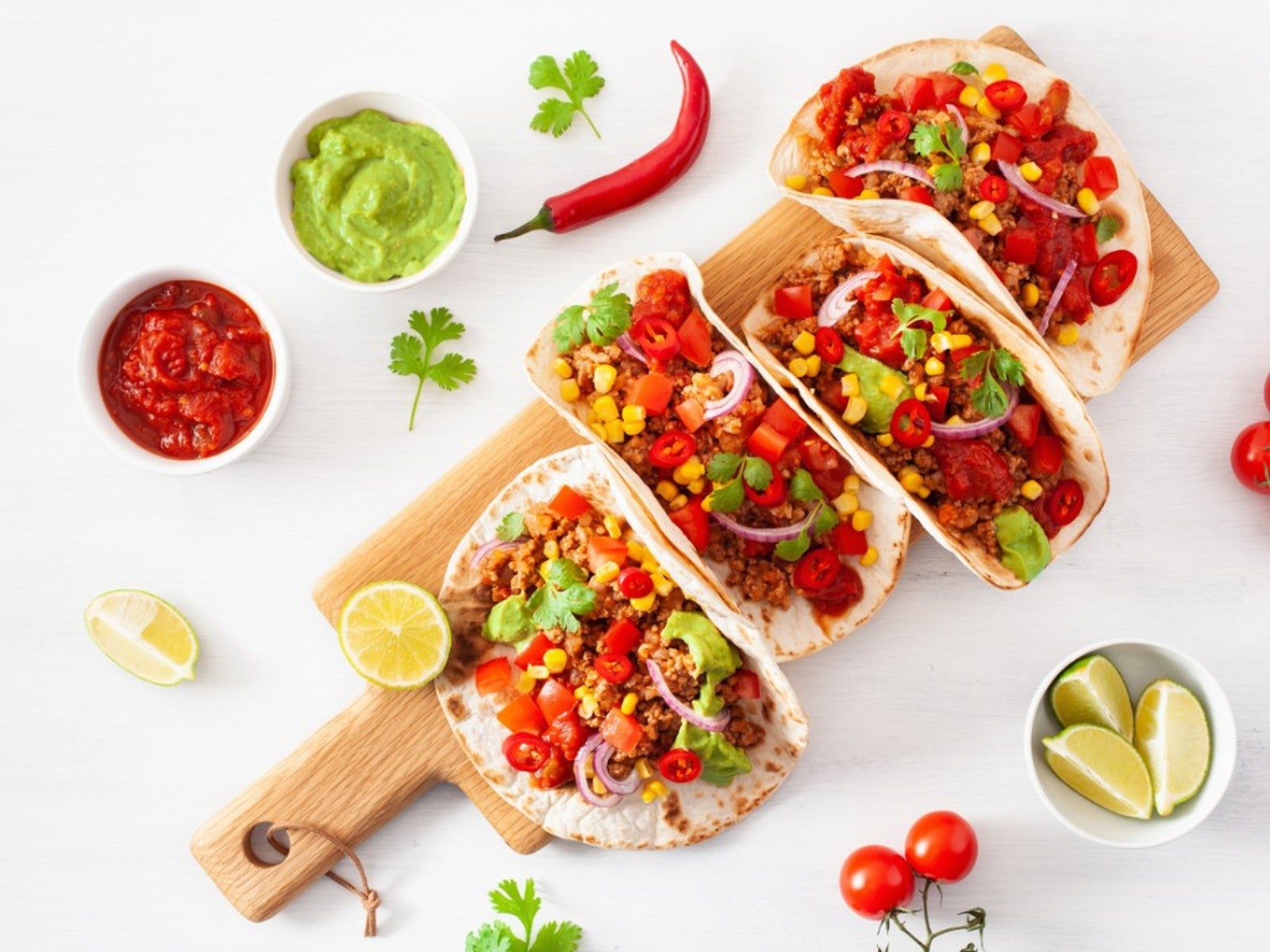Growing Herbs And Vegetables For Tacos


Tacos are one those meals that is perfect for any time of day. The key to a good taco is garden fresh salsa. Growing a Mexican garden provides all the goodies necessary for tasty salsa, right outside your door. Tomatoes, pepper, onions, garlic, and of course, cilantro, round out the flavor profile. Salsa made from your taco garden is easy to customize to suit your individual preferences, and it couldn't be fresher than harvested the day of creation.
A quick and healthy family meal might just start with tacos. They may contain meat or be a vegetarian version, but one thing a good taco needs is beautiful salsa. Mexican vegetables are readily available in grocery stores, but for the purest flavor, a salsa garden just outside can't be beat. Those juicy, ripe tomatoes are bursting with sweetness, and the bright green leaves of cilantro add just the right amount of citrus/grassiness. Grow all the produce necessary for a homemade salsa that will rival store bought.
What Do You Need for a Taco Garden?
Seasonal produce picked the day of use provides the best nutrients combined with unparalleled taste. The zestiness of home grown peppers mingles with the sweetness of tomatoes for a perfect pairing.
To plan your Mexican garden, choose your favorite crisp lettuce, cilantro, onions, garlic, peppers, tomatoes, and perhaps tomatillos for salsa verde. If you are a cilantro hater, which many people are, you might grow Mexican oregano as a seasoning. Choose the heat you want for your hot peppers, and try growing some red bell peppers for crispiness in a salsa. Corn is also an excellent addition to salsa, bringing a sweetness that helps tame the pepper's spice.
How to Grow a Salsa Garden
You can grow much of what is necessary for great salsa even in containers. If there is a garden space, amend the soil so it drains well and has some good nutrients worked in. Choose a location with at least 6 hours or more of sun. The vegetables necessary for salsa require plenty of sun and heat.
In most cases, plant seeds or starts after all danger of frost has passed. In shorter growing season locations, starts are wise, since tomatoes need several months before they produce. An early hybrid is a great option for northern gardeners. Plum tomatoes make a great Pico de Gallo, but any ripe tomato can be used in salsa.
Harvesting and Storing Mexican Vegetables
Harvest tomatoes when they are plump and fully colored. Store them on the counter until use. Cilantro can be cut at any time. Peppers are harvested when they are smooth and have achieved their color. Onions and garlic are generally taken when the bulbs are full sized and then cured by drying the husk to save. Tomatillos are ready when the husk is dry and begins to split.
Sign up for the Gardening Know How newsletter today and receive a free copy of our e-book "How to Grow Delicious Tomatoes".
Fresh is the key word, but some of the vegetables can be preserved to use in winter. Canned tomatoes and tomatillos, processed at the peak of freshness still add valuable flavor, but the texture will be different than just harvested fruits. Wash, chop, and dry cilantro to preserve it. It will lack a little bit of punch but still imparts flavor to salsa. Chop peppers to the desired size, lay them on a cookie sheet, and freeze them. Individually bag these for use at any time of the year. With a little planning and processing you can enjoy salsa from your garden, year around.

Bonnie Grant is a professional landscaper with a Certification in Urban Gardening. She has been gardening and writing for 15 years. A former professional chef, she has a passion for edible landscaping.